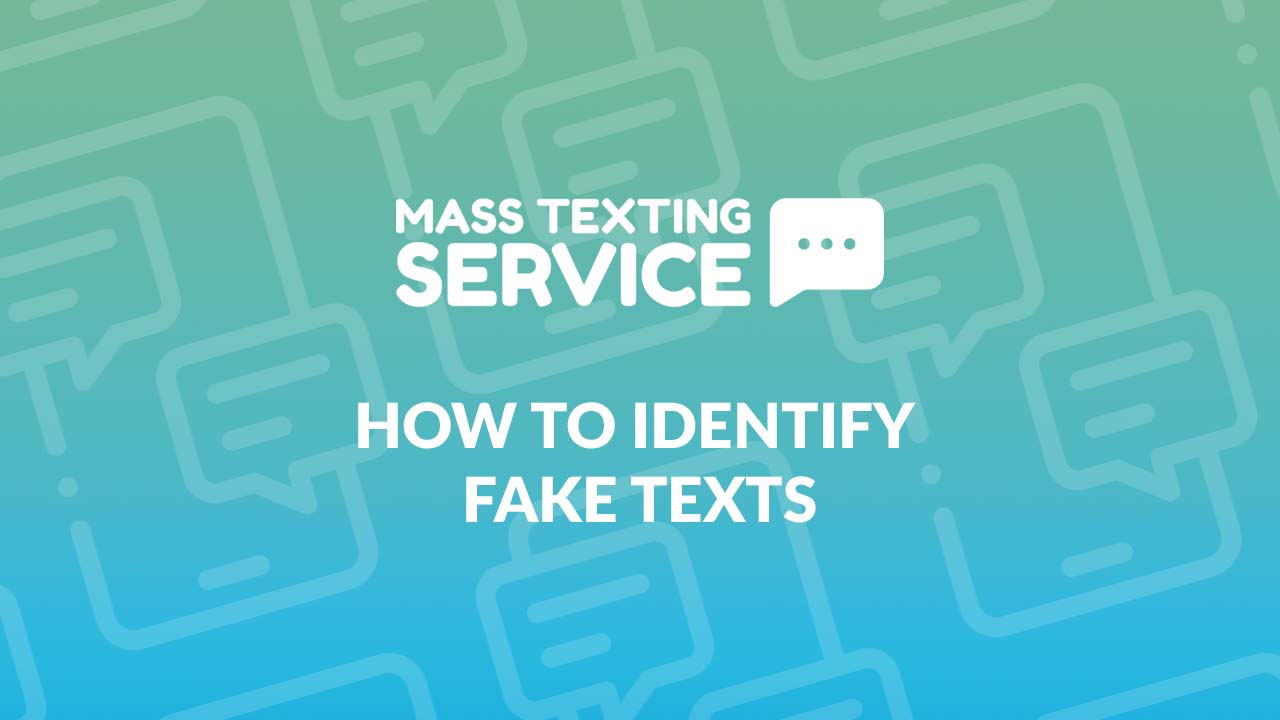In today’s digitally interconnected world, text messaging has become a ubiquitous means of communication. With the convenience of instant messaging, however, comes the potential for deception and misinformation. Fake text messages, designed to deceive and manipulate, pose a significant threat to individuals and organizations alike.
Learning to discern between authentic messages and fraudulent ones is crucial in safeguarding personal information, financial assets, and reputations. In this comprehensive guide, the texting experts at Mass Texting Service will walk you through how to identify fake text messages. From recognizing common red flags to identifying popular scam techniques, we’ll help empower you with the knowledge to distinguish fact from fiction while navigating the digital landscape securely.
How Text Scams Work
Text scams, also known as SMS scams or smishing (a portmanteau of “SMS” and “phishing”), are deceptive messages sent to individuals via text messages with the intention of defrauding them or obtaining personal information. These scams often exploit the trust people have in text messaging and may appear to come from legitimate sources, such as banks, government agencies, or well-known companies.
Scammers will use a variety of tactics to try to get you to divulge personal information. Common tactics utilized for fake text messages include:
- Urgent Alerts: Scammers often create a sense of urgency in their messages, claiming that immediate action is required to prevent a negative consequence or to claim a prize.
- Spoofed Identities: They may impersonate trusted organizations by using logos, names, or phone numbers that appear legitimate at first glance.
- Phishing Links: Text scams frequently contain links to fraudulent websites designed to steal sensitive information like login credentials, credit card numbers, or personal details.
- Prize Notifications: Some scams promise prizes, gifts, or rewards in exchange for personal information or payment of a fee.
- Threats or Fear Tactics: Scammers may use threats of legal action, account suspension, or financial penalties to coerce individuals into providing information or making payments.
Why Scam Texts Can Be Hard To Identify
Understanding what a text scam is often doesn’t make it any easier to identify scam texts. Some scams are blatantly obvious, but scams initiated by more experienced scammers can appear legitimate to the untrained eye. There are several different reasons scam texts can be hard to identify.
First and foremost, scammers can manipulate the from number to make it look like a text is coming from a number you’re familiar with. It’s easy to misidentify a text as real when it comes from a number you recognize.
Second, it can be hard to determine where links actually go. When a business sends a text message, the business is charged for every 160-character segment sent. For this reason, businesses try to keep their text messages to 160 characters or less. To do this, most businesses will often use URL shorteners to shorten the length of URLs. This means you might not be able to recognize legitimate URLs from brands you buy from. A link pointing to fedex.com could become rb.gy/m96y5b with a URL shortener.
Third, the text may correlate with recent activities in your life. You may have recently undergone a medical test, paid a phone bill, or ordered something online. A fake text may reference any of these activities – making it harder to distinguish if the text contains false information or not.
While it can be difficult to separate fake texts from real ones, there are a few telltale signs you can use to identify whether or not a text message may be fake.
Signs A Text Message Is Fake

The Text Contains Bad Grammar
We’ve all sent a grammatically incorrect text at one point in our lives. Even self-proclaimed members of the grammar police sometimes accidentally hit send on a text with bad autocomplete. Texts with grammar errors happen, but there’s a difference between an error made in haste and an error as the result of not knowing the English language well. Many scam texts contain bad grammar and misspellings from authors who aren’t native English speakers.
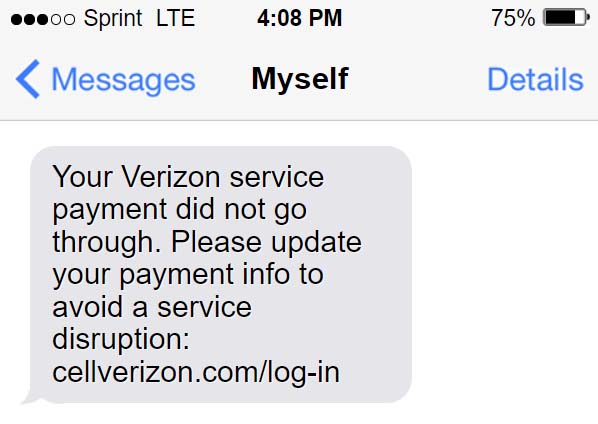
The Text Came From Your Number
Scammers have tools that allow them to manipulate phone networks so that it looks like a text is coming from a different number than actually is. One popular text scam is to send a text that looks like it came from your number about your phone service from your service provider. If your phone carrier reaches out to you, it won’t be from your number, so these texts should be ignored.
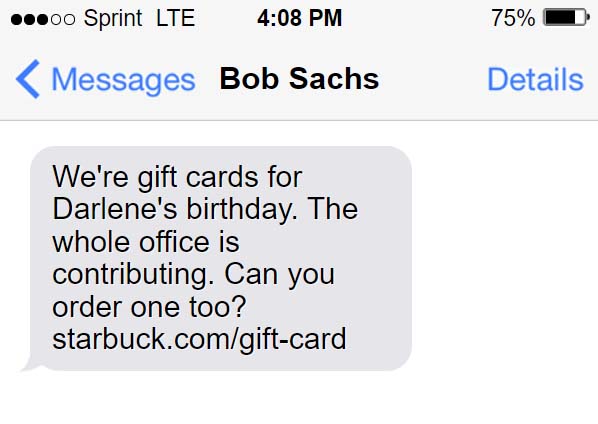
The Text Claims To Be From A Boss Or Colleague
This form of fake text is also common with fake emails. Scammers will utilize LinkedIn to find the name of your boss or a colleague at your company. They will then text pretending to be that individual. The text may even appear to come from the individual’s real number. Fortunately, it’s pretty easy to reach out to a boss or colleague to verify whether or not they actually sent you a text. Don’t respond to an unusual text from a work colleague without first speaking with the colleague outside of text.
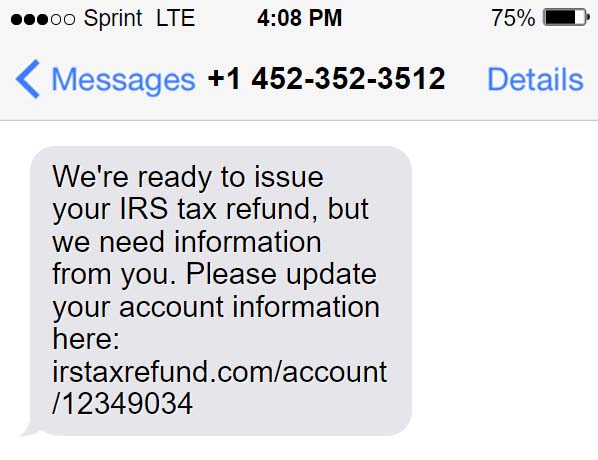
The Text Contains Inaccurate Information
One common thread with almost every fake text is that they contain inaccurate information that is easy to verify. The text may say that your family member is in trouble, the IRS needs to update your info to send you a refund, or your bank account is at risk of being closed.
You can very easily call the family member or organization referenced to learn the truth about the situation. Do not call the number you received the text from though. Make sure to look up the number or dial directly from your contacts.
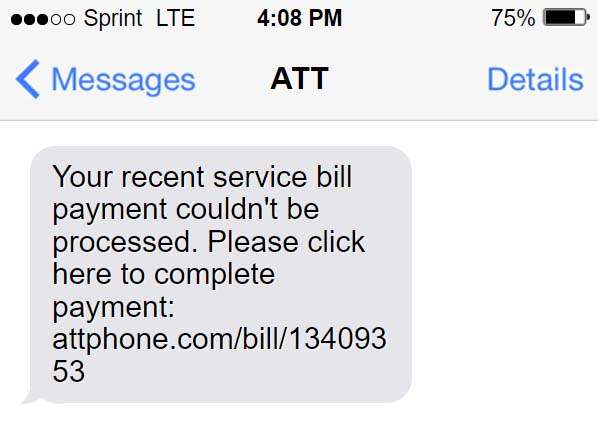
The Text References A Bill Or Invoice You Don’t Recognize
Many fake texts will contain a bill or invoice for a service or product you either never purchased or already paid for. Scammers may impersonate your phone company to try to get you to pay a fake phone bill or Amazon to get you to provide card information to look up the fake purchase.
If you get a text that a recent payment wasn’t processed, or there’s a bill or invoice for a product/service you never purchased you should go to the company referenced directly as opposed to interacting with the text message.
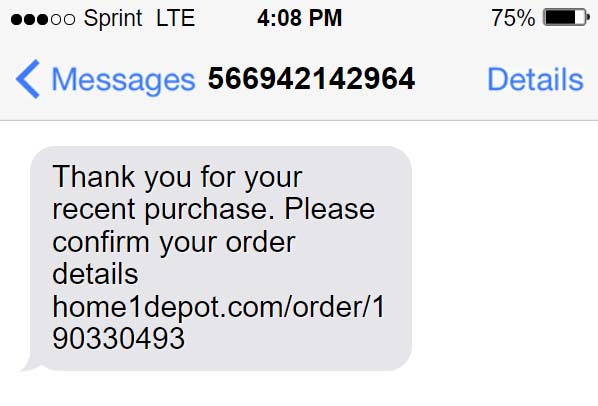
The Number Is Longer Than 10 Digits
Texts typically either come from a standard 10-digit phone number or a 5-6-digit short number. Numbers can be longer than 10 digits, but most legitimate brands won’t be sending you anything from a number that is. A text from a number longer than 10 digits is a good indication that the text is fake.

The Number Is Unidentified
Texts from your contacts will come through with the contact name. Texts from real businesses are usually identified with a sender ID. If a text comes through from a number you don’t recognize and the number doesn’t have a name associated with it, then there’s a chance it could be fake.
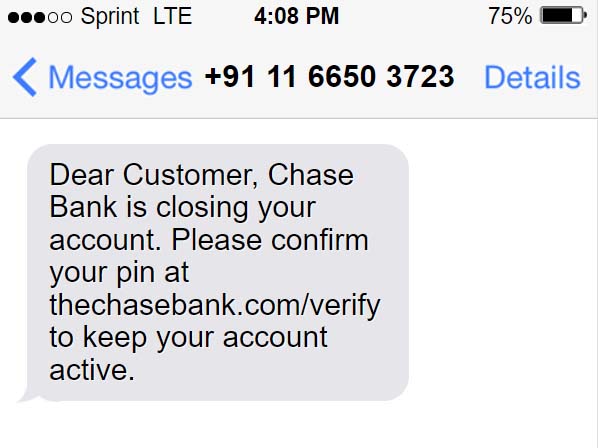
The Number Contains A Foreign Country Code
If you have relatives in other countries or you do business in other countries, then it may not be out of the ordinary to receive a text from a foreign country code. However, for the average American, receiving a text from a non-US number is an immediate red flag. Many scammers are often located overseas. One study on phone call scams found that 95% of global scam calls originate from India.
In many cases, a text from a foreign country code is a sign that the text message is fake. The country code for the United States and Canada is +1. If the phone number starts with any other country code, it’s a number from outside of North America.
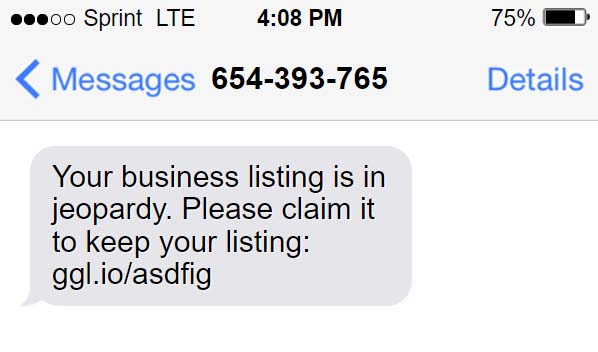
The Text Contains Suspicious Links
Determining whether or not a link is suspicious can be difficult with the ubiquitous use of URL shorteners. The most common URL shorteners are bit.ly, tinyurl.com, and kly2.io. URLs that come from other shortened domains should be approached with caution.
If a link isn’t shortened, it may contain misspellings or additional characters for popular brands. As an example, the real domain for UPS is ups.com. A scammer may buy a domain like theups.com or upsworldwide.com to make you think that you’re being texted by UPS. It’s always better to conduct an internet search to find a company’s real website as opposed to clicking a link directly in a text.
Common Types Of Text Scams
It’s essential to remain vigilant and skeptical of unsolicited text messages, especially those that request personal or financial information or create a sense of urgency. Legitimate organizations typically do not conduct important business transactions or request sensitive information via text message. Below are some of the most common text scams to look out for.
Family Member Assistance Scame Texts
In these scams, the fraudster pretends to be a family member or friend in urgent need of financial assistance. They may claim to be stranded in a foreign country, in trouble with the law, or facing a medical emergency. The scammer pressures the recipient to send money quickly, often through wire transfers or prepaid cards, without verifying the situation.
Account Verification Scam Texts
Account verification scams involve text messages that appear to be from legitimate organizations, such as banks, online payment platforms, or social media networks. The message typically claims that there is a problem with the recipient’s account and requests immediate action to verify account information by clicking on a link or providing personal details. However, the link often leads to a fake website designed to steal login credentials or personal information.
Prize Claim Scam Texts
Prize claim scams lure recipients by informing them that they have won a prize, gift card, lottery, or sweepstakes, even though they haven’t entered any contest. The message instructs the recipient to provide personal information, pay fees or taxes, or click on links to claim their prize. However, there is no actual prize, and the scammers aim to trick victims into revealing sensitive information or sending money.
Two-Factor Authentication Scam Texts
Two-factor authentication (2FA) scam texts exploit the security measure of 2FA used by many online services and financial institutions. Scammers send fake 2FA text messages claiming to be from legitimate organizations, asking recipients to confirm their identity by providing codes or PINs sent to them. The scammer then uses these codes to gain unauthorized access to the victim’s accounts or personal information.
Package Delivery Scam Texts
Package delivery scams involve text messages that claim to be from courier companies or delivery services, informing recipients that they have a package waiting to be delivered. The message typically includes a link or phone number for recipients to click or call to arrange delivery. However, the link may lead to a malicious website or downloading malware, while calling the provided number may result in attempts to obtain personal information or scam the recipient.
What To Do If You Receive A Text Scam Message
If a text you’ve received possesses any of the characteristics outlined above and you believe it is a fake text message, then there are several actions you should take.
Do Not Respond
First and foremost, don’t respond. Avoid interacting with the message or clicking on any links contained within it. Responding to a text scam can confirm to the scammer that your number is active and may result in further attempts to defraud you.
Block the Sender
Most smartphones allow you to block specific phone numbers or contacts. Blocking the sender can help prevent further scam messages from reaching you.
Report the Scam
Many mobile carriers and regulatory agencies provide mechanisms for reporting text scams. By reporting the scam, you can help authorities track down the perpetrators and prevent others from falling victim to similar schemes.
Send More Trustworthy Text Messages To Your Contacts
Text is only an effective medium for communication if your communications are being delivered, viewed, and engaged with. When a text appears to be spam it may not be delivered or a recipient may may block your number. Mass Texting Service helps you improve delivery rates and recipient interaction by helping you register a text campaign with the The Campaign Registry. Registering your number and text campaigns legitimizes your sends and reduces the risk of texts being filtered as spam.
Our easy-to-use texting platform allows you to easily send texts and engage with customers, followers, clients, friends, or family. The best part? You can start using Mass Texting Service for free. Register today to create your free Mass Texting Service account.

